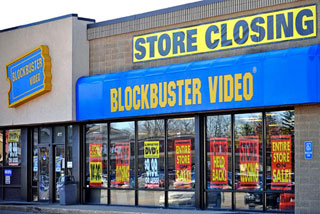
Vol. XIX, No. 4, April 2019
- Editor's corner
- Our Route 66 project
- Promptly responding to negative social media pays
- The changing culture of young adulthood
- Why most CLV, especially FEC, feasibility studies fail
- Yes, it's counterintuitive, but feedback does not help employees thrive
- Panera, C-stores & fast foods raise the bar on food
- The expanding world of location-based entertainment concepts
- Who has time for out-of-home entertainment?
- Satisfying Americans' diverse diets
Why most CLV, especially FEC, feasibility studies fail
We're sure you've run across this advice when researching stocks or mutual funds, “Past performance is no guarantee of future results.” That advice is even more relevant when conducting a feasibility study for a community leisure venue (CLV), including family entertainment centers. Here's the reasons why.
Most feasibility studies benchmark against the results from other similar CLVs. Those CLVs were developed a number of years ago, so no longer reflect the way the world and consumers are today. Even if the comparable center just opened, its results won't be relevant, as any new center's first few years' performance does not reflect long-term performance. Everyone shows up to check out new centers. That doesn't necessary prove long-term repeat appeal. The other issue is that looking at the past, or even the present, doesn't reflect what the future will be.
We've been hired as consultants to try to fix sick FECs and examined their feasibility studies prepared by other FEC consultants, and almost all miss the mark, with long term performance only at 2/3rd to 1/2th of what was projected. After a few years, many totally fail.
For a feasibility study to be more reliable, it needs to examine trends to understand not the past and not only the present, but what the future may hold. And that doesn't mean only demographics. It means changing consumer out-of-home leisure (OOH) and entertainment behaviors.

Here's an analogy. Back in 2004, if you wanted to watch a movie of your choice at home, you had to visit a Blockbuster store to pick-up a VHS tape. That was the company's peak year when it operated 4,500 U.S. stores. If you were performing a feasibility study for a video rental store back then, it would have been very positive in terms of that business model of a video rental store. However, what that feasibility study would have missed is the future advent of DVDs, Netflix mail-order services, video on demand and even Redbox automated kiosks. After 2004 Blockbuster went into a death spiral due to all the emerging new means to view movies at-home and consumers' changing preferences. It filled bankruptcy in 2010 and finally went out of business in 2013.
Blockbuster's financial demise into bankruptcy only took six years from its peak. What is different today is that the rate of change for all business models and for consumer behavior is accelerating faster than it was back then due to the internet and social media, accelerating advances in technology, new and expanding out-of-home leisure options, changing sociodemographics and changing consumer values and behaviors.
Most existing CLV business models that have been around for a number of years are already obsolete or becoming obsolete. One good example is the classic FEC model with a little bit of something for every age group. The world and consumers have changed radically since that business model developed decades ago. It is no longer a fit for the current world, let alone the future, no different than what happened to Blockbuster. Yet, many feasibility studies continue to project the FEC model and other older CLV business models as successful into the future.
Most of the older business models are not financially feasibility for the length-of-time it takes to earn a return on investment. If you want to earn a 20% return, it takes five years just to get your investment back, assuming the CLV will continue to earn that annual return. Most have their returns fall off around the second or third year. It takes a lot longer than five years at 20% to earn an actual return on that investment after getting the investment paid back. CLVs need to be developed on a business model that has longevity.
Past performance of a CLV business model is unlikely to result in future success
Feasibility studies need to address what the future holds, not the past, to make a CLV future-proof. They need to be honest and say that most older business models, even many current ones, aren't financially viable long term. A true feasibility study determines what business model, if any, will be successful into the future.
Many consumer trends first emerge in other industries. It is myopic to only study the location-based entertainment industry. Research by IBM showed that between 90% and 97% of the time, executives are spending their time and efforts studying their own industry. You'll never see the disruption, the changes to consumer preferences and behaviors that blankets multiple industries if you are only spending time analyzing your industry.

At White Hutchinson we believe in evidence-based decisions, so we devote substantial investment and time, including our own nationwide surveys, to identify current and future trends and interpret how they will impact future consumer leisure and entertainment behaviors. Rather than only study out-of-home entertainment trends, we research (including following over 40 different research journals) and study trends across many industries including retail, hospitality, sports, restaurant and food service, travel, marketing, as well as trends in socio-demographics, time, and technology, and how they all currently and in the future will translate into consumer preferences and behavior and its impact on OOH leisure and entertainment. Some of it gets a little nerdy, but that's what it takes to give our clients future-proof CLVs.
Although we can't guarantee our feasibility studies that recommend the business model for a client's CLV will be 100% correct, we try to give our clients the best possible odds of success due to our trends research and analysis.
Vol. XIX, No. 4, April 2019
- Editor's corner
- Our Route 66 project
- Promptly responding to negative social media pays
- The changing culture of young adulthood
- Why most CLV, especially FEC, feasibility studies fail
- Yes, it's counterintuitive, but feedback does not help employees thrive
- Panera, C-stores & fast foods raise the bar on food
- The expanding world of location-based entertainment concepts
- Who has time for out-of-home entertainment?
- Satisfying Americans' diverse diets


